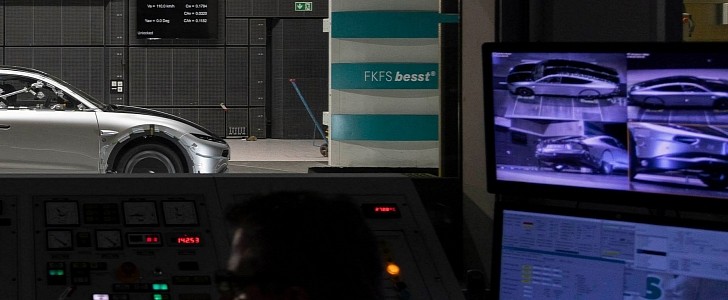Lightyear is yet to start the production of its solar electric sedan. According to its last update, manufacturing should start in Finland in two months. In other words, Valmet Automotive should begin pumping them out by November. If Aptera does not start making its solar trike until then, the Lightyear 0 will be the world’s current most aerodynamic production EV with a drag coefficient of 0.175.
The last time we checked, the Aptera had a drag coefficient of 0.13, which will be really hard to beat. Lightyear may argue that the trike only carries two people and has only three wheels. With that in mind, the Lightyear 0 will retain the title of the most aerodynamic modern four-wheeled production car, which is no small feat.
The impressive 0.175 figure was confirmed in Stuttgart, using a Forschungsinstitut für Kraftfahrwesen und Fahrzeugmotoren Stuttgart (FKFS) wind tunnel under Worldwide Harmonized Light Vehicle Test Procedure (WLTP) conditions. The issue is that there is no unified measurement procedure, which makes comparing drag coefficients difficult.
Some automakers have their own wind tunnels and measure how aerodynamic their vehicles are without external help. Smaller companies such as Lightyear have to use wind tunnels from other entities, such as FKFS. On top of that, the aerodynamic performance also depends a lot on the frontal area. Multiplied by the drag coefficient, this measure gives us the drag area, which is the number we should compare more often.
Lightyear has not told us the frontal area of its first solar car. However, it is certainly more extensive than that of the Volkswagen XL1. With a drag coefficient of 0.186, it had a frontal area of 1.5 square meters. That said, its drag area was 0.28 m², the lowest ever for a production car. Only the Aptera can present better drag coefficient and drag area numbers. Being a larger vehicle than the XL1, it will be a difficult challenge.
The impressive 0.175 figure was confirmed in Stuttgart, using a Forschungsinstitut für Kraftfahrwesen und Fahrzeugmotoren Stuttgart (FKFS) wind tunnel under Worldwide Harmonized Light Vehicle Test Procedure (WLTP) conditions. The issue is that there is no unified measurement procedure, which makes comparing drag coefficients difficult.
Some automakers have their own wind tunnels and measure how aerodynamic their vehicles are without external help. Smaller companies such as Lightyear have to use wind tunnels from other entities, such as FKFS. On top of that, the aerodynamic performance also depends a lot on the frontal area. Multiplied by the drag coefficient, this measure gives us the drag area, which is the number we should compare more often.
Lightyear has not told us the frontal area of its first solar car. However, it is certainly more extensive than that of the Volkswagen XL1. With a drag coefficient of 0.186, it had a frontal area of 1.5 square meters. That said, its drag area was 0.28 m², the lowest ever for a production car. Only the Aptera can present better drag coefficient and drag area numbers. Being a larger vehicle than the XL1, it will be a difficult challenge.








































